Ultraviolet light, warmer temperatures and the coronavirus
Most of us are going to have increased exposure to ultraviolet radiation in the coming months. Days are getting longer and the sun angle will be getting higher between now and the summer solstice. There has been some speculation as well as limited research indicating there is a chance ultraviolet radiation/UV could be tough on this deadly virus. Ultraviolet waves and their wavelengths can seem confusing, but NASA presents a well-done explanation in this short video:
There appears to be confusion between UV’s role as a disinfectant and its hypothetical seasonal potential for reducing viral population outdoors. If there were something to the latter, we might then expect some temporary lessening of the viral threat in the Northern Hemisphere for a few months.
First, let’s examine UV and its role as a disinfectant. If you watched the YouTube video above, you know the UVC band is the strongest and most damaging part of the UV portion of the spectrum, compared to UVA and UVB. UVC is filtered out of our atmosphere in its entirety in the ozone layer, lucky for us. Indoors, UVC is effectively used to disinfect many types of equipment, surfaces, potable water and hospital rooms after infectious patients have been removed, as seen in this Johannesburg hospital image.
Outdoor human exposure to UVC does not materially increase with longer days and higher sun angles. We have enough trouble with UVB, which is largely responsible for sunburn, skin aging, and skin cancer. UVC cannot be used to disinfect humans. In minutes, it can cause blindness and major skin damage. If you were so exposed to UVC you wouldn’t feel heat or pain during the exposure. This is the World Health Organization warning for just brief, incidental exposures.
University of New Hampshire environmental engineer Jim Malley spoke on this matter to the L.A. Times:
“You don’t really get a second chance,” he said. With a high enough dose from a powerful decontamination system, “that kind of UV damage would be so intense that you would lose your sight.”
In addition to decontaminating surfaces, there is a valued application for removing pathogens in indoor air in carefully designed closed systems. Such systems must be strong enough to pull contaminated air up so that UVC radiation won’t reach workers below, and then designed to bring the cleansed air back down to staff level. Many hospitals have such systems in place in sensitive areas. There is no thought to use UVC as a decontaminant internally or externally on humans because major tissue damage cannot be avoided. It can’t be done.
What about outdoors? Sunlight has been found to be useful in reducing certain pathogen counts in, for example, plastic water containers directly exposed for about 5 hours. Emory University virologist Juan Leon told NPR the World Health Organization makes such recommendations for sterilizing water which can’t be properly treated. But so far, there is no data that shows natural UVA and UVB exposure can make an appreciable difference in Covid-19 populations outdoors. There have been blogs making such claims and circulating widely on social media but, as of last week, the supportive data simply isn’t there. With such early nonproductive test results there is a suggestion, at best, natural exposure would have to be quite lengthy to produce such an effect.
There are no big changes on the heat-humidity-virus connection either since I wrote on this topic about a month ago. That is not good news. In certain laboratory conditions, more concentrated heat and humidity have been shown to reduce viral populations. In the real world of epidemiology, however, so far such effects remain difficult to separate in the data, if they exist at all. In a small sampling study published in the Journal of the American Medical Association Network Open, the virus was found to spread from person to person as readily in a warm and humid environment as in cooler, drier environments.
We can expect to encounter warm and humid conditions in much of the country in coming months, and there had been hope of a temporary respite in the rate of contagion. Liji Thomas, MD, wrote in a recent edition of Life Sciences Medical News the JAMA study largely dispels this belief, at least so far. At some point, heat DOES kill viruses, but there is no study that can trace this effect in a measurable way in nature.
On the Johns Hopkins interactive global map, some of the lower incidences seen in the Southern Hemisphere and some tropical regions is tied by most epidemiologists more to thinner population density than to weather and climate. For example, central and south Florida have had an unusually hot April, with record heat in southeast Florida. There is a slight downward curve in the rate of infection in places like south Florida. Most epidemiologists tie that small decline to social distancing, at least outside of nursing homes and phase of the “spike.” Despite those spring break pictures, not everyone is clumping together at the beaches there. Still, the book is not yet completely closed on the possible heat-Covid-19 connection.
Finally, most of us will have opportunity to absorb more vitamin D in the sunshine. Many already take vitamin D supplements. There have been numerous studies linking actual vitamin D deficiency with increased vulnerability to respiratory infections. However, there have not yet been studies linking vulnerability specifically to this new Covid-19 virus and vitamin D deficiency. Additional vitamin D absorption from sunlight may be of some use, but all the usual precautions to avoid overexposure to UV should still be kept in mind. Vitamin D toxicity comes from overdoing supplements, not from sunshine, and regular ingestion of high doses is known to be dangerous.
In the meantime, there’s no argument on what sunshine can do for the psyche. It may end up sun and warm weather can’t help much with lessening contagion, but the sun can work wonders for our state of mind regardless of biological effects. That’s part of the battle.

